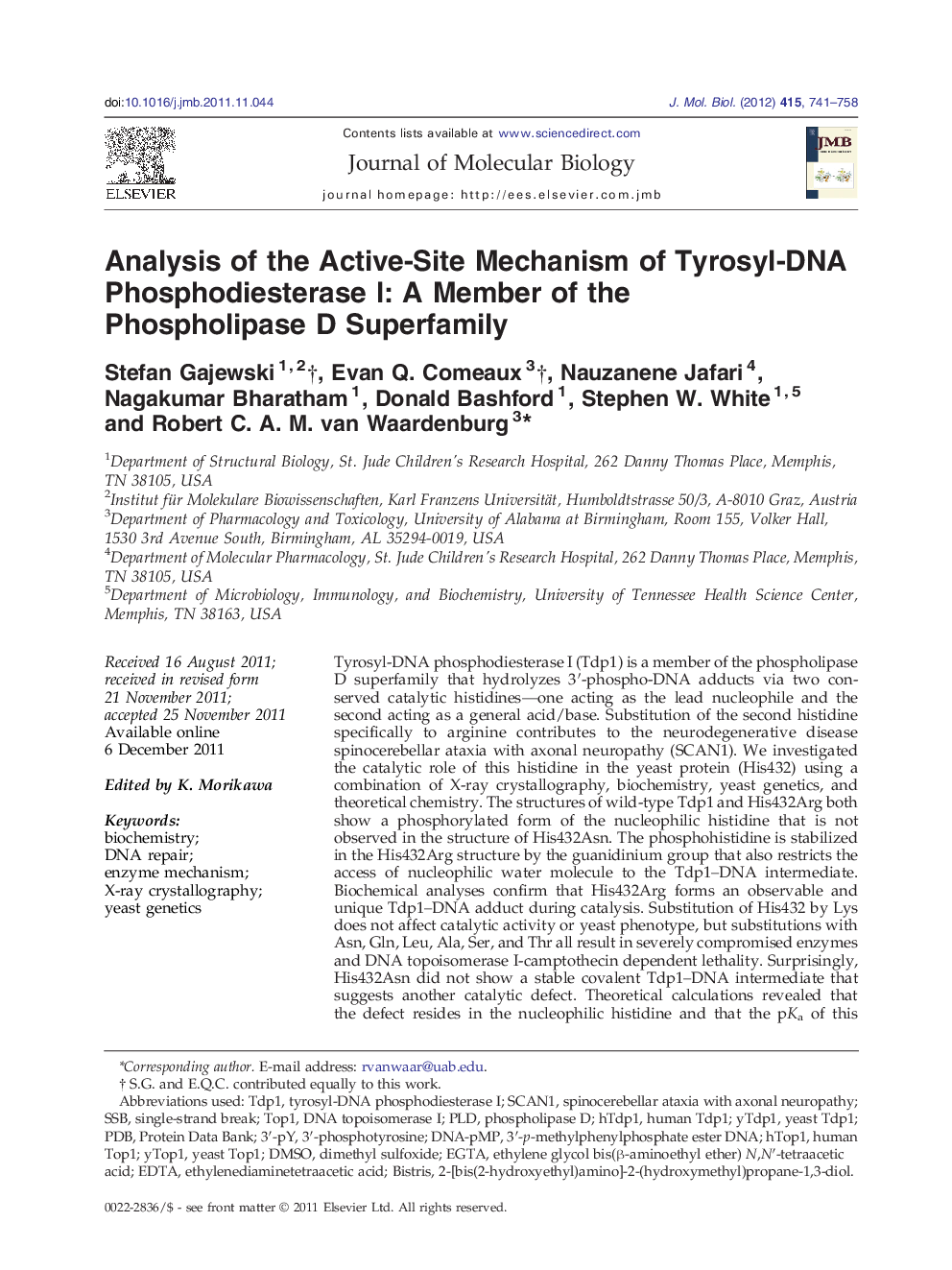| کد مقاله | کد نشریه | سال انتشار | مقاله انگلیسی | نسخه تمام متن |
|---|---|---|---|---|
| 2184849 | 1095939 | 2012 | 18 صفحه PDF | دانلود رایگان |

Tyrosyl-DNA phosphodiesterase I (Tdp1) is a member of the phospholipase D superfamily that hydrolyzes 3′-phospho-DNA adducts via two conserved catalytic histidines—one acting as the lead nucleophile and the second acting as a general acid/base. Substitution of the second histidine specifically to arginine contributes to the neurodegenerative disease spinocerebellar ataxia with axonal neuropathy (SCAN1). We investigated the catalytic role of this histidine in the yeast protein (His432) using a combination of X-ray crystallography, biochemistry, yeast genetics, and theoretical chemistry. The structures of wild-type Tdp1 and His432Arg both show a phosphorylated form of the nucleophilic histidine that is not observed in the structure of His432Asn. The phosphohistidine is stabilized in the His432Arg structure by the guanidinium group that also restricts the access of nucleophilic water molecule to the Tdp1–DNA intermediate. Biochemical analyses confirm that His432Arg forms an observable and unique Tdp1–DNA adduct during catalysis. Substitution of His432 by Lys does not affect catalytic activity or yeast phenotype, but substitutions with Asn, Gln, Leu, Ala, Ser, and Thr all result in severely compromised enzymes and DNA topoisomerase I-camptothecin dependent lethality. Surprisingly, His432Asn did not show a stable covalent Tdp1–DNA intermediate that suggests another catalytic defect. Theoretical calculations revealed that the defect resides in the nucleophilic histidine and that the pKa of this histidine is crucially dependent on the second histidine and on the incoming phosphate of the substrate. This represents a unique example of substrate-activated catalysis that applies to the entire phospholipase D superfamily.
Graphical AbstractFigure optionsDownload high-quality image (87 K)Download as PowerPoint slideHighlights
► The crystal structures of Tdp1 H182A, H432R (SCAN1), and H432N catalytic mutants have been resolved.
► SCAN1 Arg stabilizes phospho-His linkage, prevents H2O access, and is a weak proton donor.
► The cellular toxicity of H432R and H432N Tdp1 mutants is conserved from yeast to humans.
► Calculations show that catalytic His residues are charged upon binding of phospho-DNA substrate.
► Catalytic His182 residue shows surprising flexibility in the H432N protein structure.
Journal: Journal of Molecular Biology - Volume 415, Issue 4, 27 January 2012, Pages 741–758